Flea Dirt on Dogs: What It Is, How to Spot It, and How to Get Rid of It
Flea dirt, or flea feces, appears as tiny, dark specks on your dog, resembling black pepper. It’s a sign of an active flea infestation. Fleas can cause allergies, skin infections, anemia, and spread diseases like Bartonella. Check your dog’s neck, ears, and tail base for flea dirt, which turns reddish-brown when moistened.
Prompt treatment with topical solutions, oral medications, and flea collars is essential. Regular grooming and vacuuming help prevent infestations. This blog will explain how to spot and eliminate flea dirt to protect your dog.
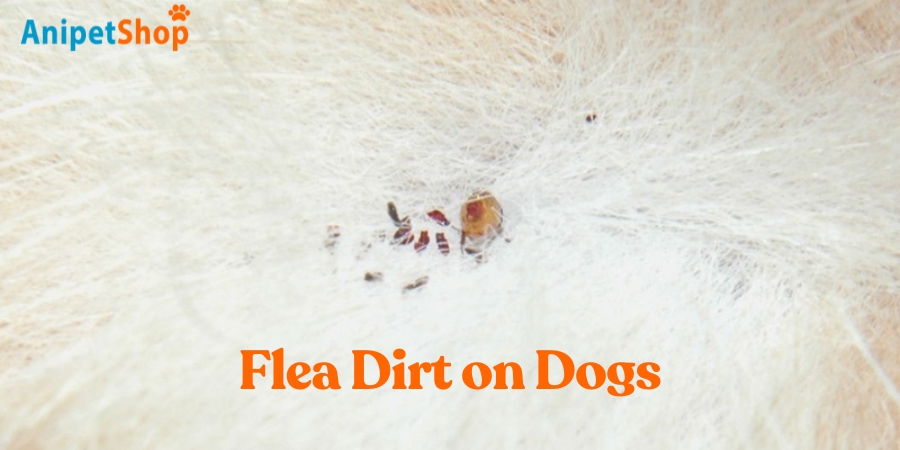
What is Flea Dirt?
Flea dirt, also known as flea feces, is the waste produced by fleas after they feed on a pet’s blood. Flea dirt looks like specks of pepper, appearing as dark, dust-like particles scattered across a pet’s fur, skin, or common resting areas such as bedding and favorite spots.
Flea dirt is primarily made of digested blood, which gives it a distinctive quality: when it comes into contact with moisture, it dissolves and leaves a reddish-brown stain. This color change is due to the blood content in flea dirt and is a quick way to differentiate it from regular dirt or dust.
To confirm that a speck is flea dirt, place it on a damp white paper towel or tissue. If it creates a reddish-brown stain, this indicates the presence of flea dirt and potentially an active flea infestation. Recognizing flea dirt is crucial for early detection of a flea infestation, as fleas can consume up to 15 times their body weight in blood daily. Identifying flea dirt early can help prevent the health risks associated with fleas, such as the transmission of diseases like Bartonella (Cat Scratch Fever) and Rickettsia (typhus), as highlighted by the Centers for Disease Control and Prevention (CDC). Identifying and addressing flea dirt promptly can help protect your pet from these health risks and prevent a full-blown infestation.
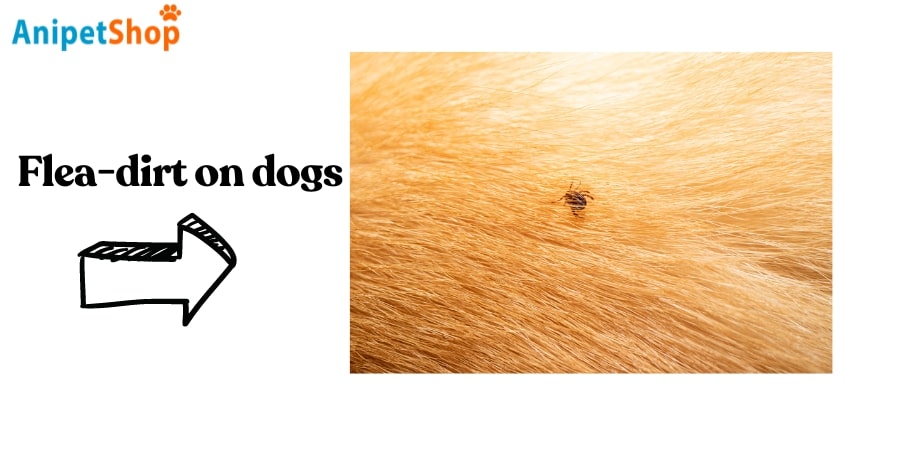
What Does Flea Dirt Look Like?
Flea dirt, often referred to as flea droppings, looks like tiny black or dark brown specks scattered in your pet’s fur. It’s essentially the waste material left by fleas and contains digested blood. Many pet owners describe it as resembling ground pepper or coffee grounds. You’re most likely to notice it in areas where fleas thrive, such as around the base of your pet’s tail, along their lower back, on their belly, or in skin folds.
One of the simplest ways to differentiate flea dirt from regular dirt is by performing a quick “wet test.” Take a damp paper towel or cotton ball, pick up a sample of the specks, and smear them on a white surface. If the specks dissolve into a reddish-brown streak, it confirms the presence of flea dirt, as this indicates blood content.
While identifying flea dirt is useful, it’s also a clear sign that fleas are present and actively feeding on your pet. To address this, you’ll need to treat your pet with effective flea control measures and thoroughly clean your home to break the flea life cycle. If you’re unsure about how to proceed, consult your veterinarian for recommendations tailored to your pet’s needs.
Where To Look for Flea Dirt on Dogs?
Flea dirt can often be found in specific areas on your pet’s body, where fleas tend to gather to feed. Knowing these common spots can make it easier to detect flea dirt and fleas early on. For both dogs and cats, fleas typically prefer warm, less accessible areas where your pet may not easily reach to groom.
When checking for flea dirt on dogs, focus on common gathering spots such as the base of the tail, lower back, backs of the hind legs, and the belly. Using a flea comb, gently brush through the fur in the opposite direction of hair growth, moving from tail to head, which helps expose the skin more effectively. This technique reveals the skin beneath and makes it easier to spot any flea dirt, which typically appears as tiny, dark specks scattered along these areas.
If you spot signs of flea dirt—especially near the tail base, neck, or belly—or notice scratching, biting, or scabs from your dog’s reaction to flea bites, it’s a strong indication that fleas may be present. Frequent checks and using a flea comb can help catch flea infestations early, making treatment more manageable and preventing the issue from worsening.
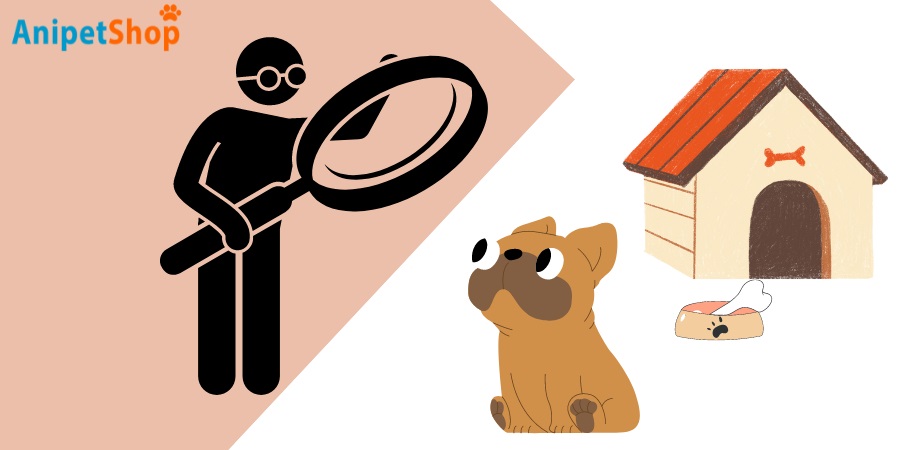
The Dangers of Flea Dirt
The Dangers of Flea Dirt?
Flea dirt itself does not cause illness in humans. However, fleas can transmit diseases such as bartonellosis, tapeworms, anemia, and more. These diseases can be passed to cats, dogs, and humans if an infected flea bites or is accidentally ingested. Symptoms are as follows:
- Skin Irritation: Flea dirt can cause severe skin irritation in pets, leading to itching, discomfort, and potential secondary infections if left untreated.
- Anemia: In severe infestations, the presence of flea dirt indicates a high number of fleas feeding on your pet. This can result in anemia, especially in small or young animals, as the constant blood loss from flea bites can become significant.
- Disease Transmission: Flea dirt can harbor bacteria that transmit diseases to humans. These include:
-
- Flea-borne typhus, which can cause symptoms like fever, chills, body aches, muscle pain, nausea, vomiting, stomach pain, coughing, and rash.
- Cat scratch disease, which can be transmitted when an infected cat, carrying bacteria from flea dirt, scratches a person.
- Plague, which can spread to humans through bites from fleas that have previously fed on infected rodents.
Additionally, flea dirt serves as a food source for newly-hatched flea larvae. This sustains the flea population and contributes to a cycle of infestation that, if left untreated, becomes increasingly difficult to control. The longer fleas are allowed to remain on your pet and in your home, the more they can feed, multiply, and spread diseases, leading to a full-blown infestation. Early detection and removal of flea dirt are crucial to preventing these risks and protecting both your pet and household.
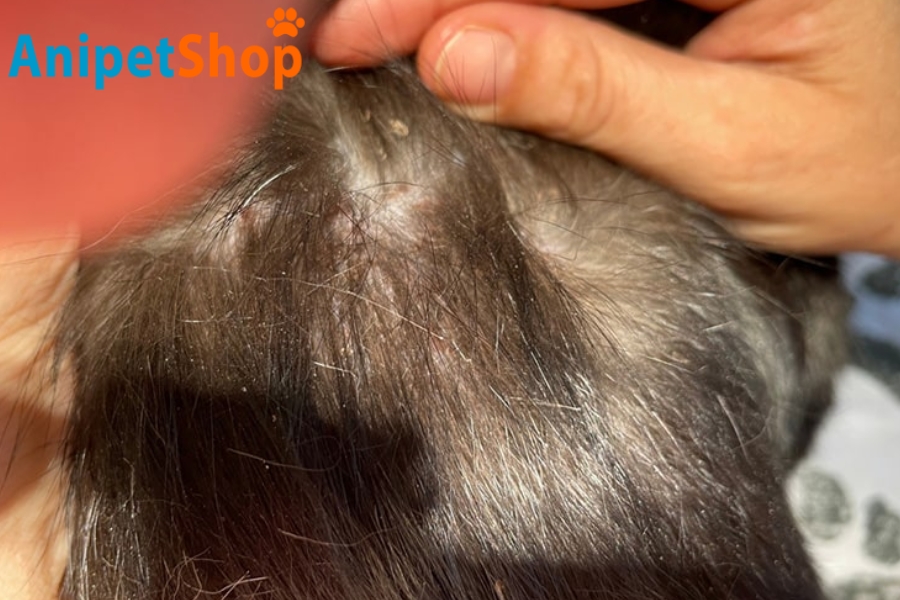
How to Get Rid of Flea Dirt on Your Dog
Giving your dog a bath is one of the quickest and most effective ways to remove flea dirt from their skin. Using a gentle, soothing oatmeal shampoo can be especially helpful for pets with itchy, irritated skin from flea bites, as oatmeal shampoos tend to be kinder and less drying than flea shampoos. During the bath, a flea comb can be used to thoroughly remove flea dirt and any remaining fleas, especially if there is a large amount on the coat. Comb through areas like the base of the tail, belly, and behind the legs, where flea dirt commonly collects. After rinsing, make sure your dog is dried off completely, and consider applying a flea preventative to help keep fleas and flea dirt from coming back. Regular grooming with a flea comb after bathing can further help control flea dirt and maintain your dog’s coat.
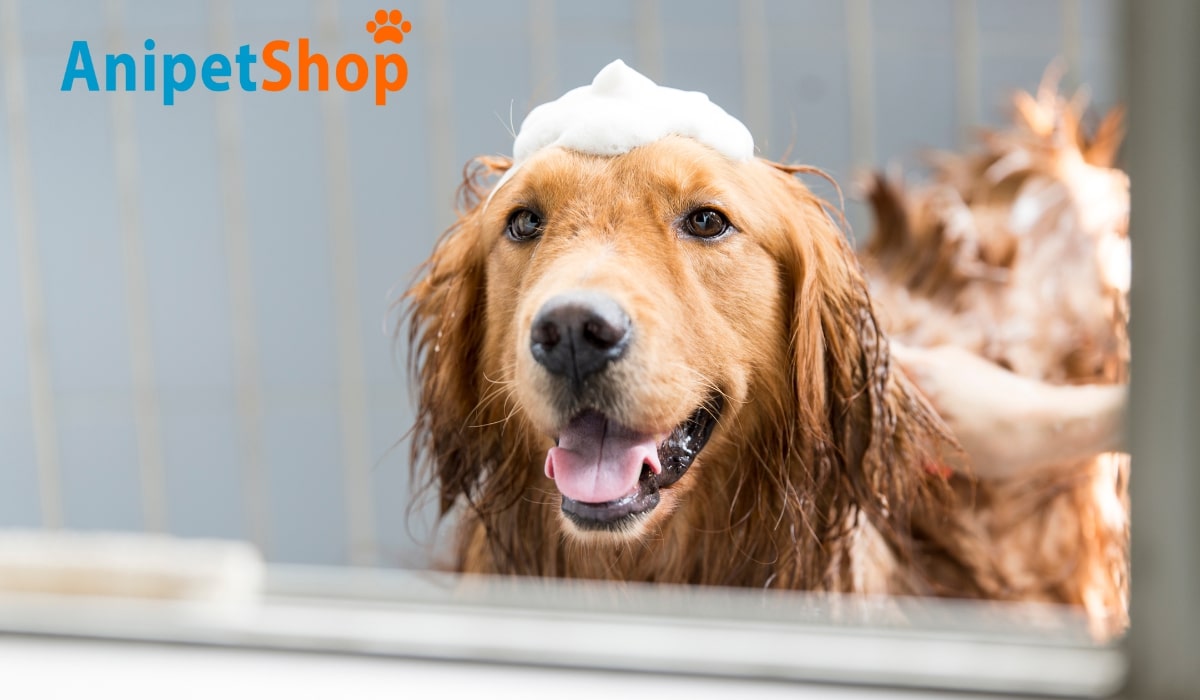
Flea and Tick Medications
Once you’ve thoroughly removed flea dirt with a bath, applying a reliable flea preventative is essential to keep fleas from re-infesting your pet. Oral flea preventatives, like Simparica®, NexGard®, Bravecto®, and Credelio®, are highly effective as they start working within 30 minutes to a few hours, killing fleas quickly and providing ongoing protection. These treatments are particularly helpful for pets with high flea exposure, as they actively work from within to disrupt the flea life cycle and prevent future flea dirt buildup on your pet.
Topical treatments are another option, offering effective protection when applied directly to the skin. While they can take between 12 to 48 hours to fully start working, they provide long-lasting control that can be especially useful for pets who may have difficulty with oral medications. However, topical treatments require careful application to ensure the liquid stays on the skin and isn’t accidentally wiped off before it’s fully absorbed.
Consulting with your veterinarian is key to selecting the best preventative for your pet’s needs. They can assess the infestation level and consider factors such as your pet’s age, weight, and lifestyle, as well as any potential sensitivities. Once the right product is chosen, staying consistent with monthly preventatives will help protect your pet and home from future infestations, keeping flea dirt, bites, and irritation under control.
Flea and Tick Topical Shampoos, Sprays and Wipes
If you’re dealing with an active flea problem, combining these flea and tick medications with additional topical solutions can help eliminate existing fleas, flea dirt, and prevent reinfestation more thoroughly.
Flea and tick shampoos, sprays, and wipes are excellent complementary tools alongside a preventative medication. Bathing your dog with a flea and tick shampoo removes flea dirt and fleas on contact, while soothing irritated skin. After the bath, flea sprays can be used to treat areas in your home and yard where your dog spends time. These sprays, such as those from Advantage®, target fleas hiding in carpets, bedding, furniture, and outdoor spaces, creating a safer environment for your pet. Flea wipes can also help keep your pet’s coat clear in between baths, making this multi-layered approach highly effective in managing fleas and ticks and keeping your dog comfortable and flea-free.
Vacuum Frequently and Wash Pet Bedding
Effectively removing flea dirt from your home involves thorough and consistent cleaning to ensure that both the flea dirt and any remaining fleas or flea eggs are eliminated. Start by vacuuming all floors, carpets, rugs, baseboards, and cushioned furniture every other day, as flea eggs can quickly hatch into larvae if left undisturbed. Use a high-powered vacuum to capture flea dirt, eggs, and fleas hidden in fabrics and crevices. After vacuuming, immediately empty the vacuum contents into a sealed bag and dispose of it in an outdoor trash bin to prevent any fleas from escaping.
In addition, wash all pet bedding in hot, soapy water or on the highest setting in your washing machine to kill flea eggs and larvae. Fleas can also bite humans, so it’s recommended to wash and dry your own bedding in hot water to prevent any lingering fleas from spreading. For extra protection, you may consider using flea sprays or foggers on pet beds, carpets, and furniture to break the flea life cycle and prevent reinfestation. Consistent cleaning and treating affected areas in your home will help keep flea dirt and fleas from returning, creating a healthier environment for both you and your pets.
Routine Flea Checks
After treating your dog for fleas, perform daily checks using a flea comb to ensure the treatment is effective. Oral flea medications typically start killing fleas within two to four hours, and you may notice dead fleas in your dog’s fur within the first 24 hours. Continue monitoring for new signs of fleas, such as flea dirt or eggs, to ensure the infestation is fully under control.
In cases of severe infestation, your dog may require multiple rounds of treatment over several months. The flea life cycle lasts about three months, so ongoing treatment and preventative measures are crucial to break the cycle and keep your dog flea-free.
Getting Rid of Flea Dirt in Your Home
Getting rid of flea dirt in your home is crucial to prevent reinfestation of your dog. Here are some practical measures you can take:
- Vacuum thoroughly: Use a vacuum cleaner to thoroughly clean your home, paying attention to areas where your dog spends time. Vacuum carpets, rugs, furniture, and other surfaces where flea dirt may have accumulated. Dispose of the vacuum bag or empty the canister in a sealed plastic bag to prevent fleas from reinfesting your home.
- Wash pet bedding in hot water: Fleas and their eggs can hide in your pet’s bedding, so washing them in hot water is essential. The high temperature will help kill fleas, larvae, and eggs. Use a pet-safe detergent and dryer heat, if possible, to ensure thorough cleaning.
- Clean and treat other surfaces: Clean and treat other surfaces that your dog comes into contact with, such as blankets, pillows, and any fabric-covered furniture. Hot water washing or steam cleaning can help eliminate fleas and their debris.
- Consider environmental insecticide treatment: In severe infestations, you may need environmental insecticide treatments to eliminate fleas from your home. Consult with your veterinarian or a pest control professional for guidance on choosing the appropriate products and applying them safely. Follow the instructions carefully and take precautions to protect yourself, your pets, and the environment.
- Pay attention to outdoor areas: Fleas can also be present in outdoor areas where your dog spends time. Keep your yard clean by regularly removing debris and mowing the grass short. Consider using outdoor flea control products recommended by your veterinarian to reduce the flea population in your yard.
Remember, addressing flea dirt in your home is essential to comprehensive flea control. By eliminating fleas and their eggs from your living environment, you can help prevent reinfestation of your dog and break the flea life cycle.
Flea dirt on your dog is more than just a nuisance—it’s a clear indicator of an active flea infestation that requires prompt attention. Understanding what flea dirt is, how to identify it, and the steps necessary to eliminate it are crucial in protecting your dog from the discomfort and health risks associated with fleas. Regular grooming, effective flea treatments, and thorough cleaning of your home are essential practices to keep fleas at bay and ensure the well-being of your furry friend. By staying vigilant and proactive, you can effectively manage and prevent flea infestations, safeguarding both your dog and your household from these persistent pests.
FAQs
What if I see flea dirt but no fleas?
Yes, it’s possible to find flea dirt even if you don’t see any fleas. Fleas may have been present but could have jumped off or been removed through grooming or licking. The flea life cycle typically takes 4 to 6 months to complete, meaning you might still notice flea dirt or a few fleas during this period as they are being eradicated. Flea dirt without live fleas isn’t a concern, provided you continue to monitor and see no new fleas.
Does flea dirt mean an infestation?
Yes, the presence of flea dirt typically indicates an infestation. Flea dirt comprises flea droppings, which consist of digested blood from the host (such as your dog). If you find flea dirt on your dog, it suggests fleas are present and reproducing. It’s essential to address the infestation promptly to prevent it from worsening and causing discomfort to your dog.
Will flea dirt go away?
Flea dirt will not go away on its own. It is a sign that fleas are present and actively feeding on your dog. To eliminate flea dirt, you must eliminate the fleas from your dog and their environment. Treating your dog with appropriate flea control products, regularly cleaning and vacuuming your home, and following proper flea prevention measures can help eliminate flea dirt and prevent its recurrence.
Is Flea Dirt Harmful to Humans?
Flea dirt itself isn’t known to cause any illnesses in humans. However, fleas, which produce flea dirt, can carry diseases such as bartonellosis, tapeworms, anemia, and others. These diseases can be transmitted to cats, dogs, and even humans through flea bites or if an infected flea is ingested. Therefore, if you notice flea dirt in your home, it’s important to take immediate action to address the underlying flea infestation.
See More:
- How to Get Rid of Fleas in Your Home
- What Do Flea Eggs Look Like and How Do You Get Rid of Them?
- What Do Fleas Look Like and How to Get Fleas off Your Dogs?
References:
- Otranto, D., & Wall, R. (2008). New strategies for the control of arthropod vectors of disease in dogs and cats. Medical and Veterinary Entomology, 22(4), 291–302. https://doi.org/10.1111/j.1365-2915.2008.00740.
Lily Watson is an author specializing in veterinary care in Australia. With a profound passion for animal welfare and a solid foundation in veterinary science, Lily has dedicated herself to disseminating valuable knowledge and information for both pet owners and professionals in this field.

